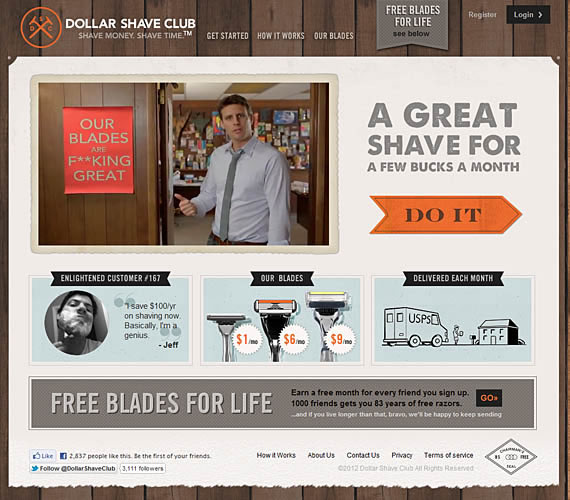Following recent updates to Google’s search algorithm (both Penguin and Panda* updates have been rolling out changes over the past few months), greater emphasis has been placed on ‘dwell time’, ‘click through rates’, and even content that is placed ‘above the fold’.
What do these mean to you? Well, ‘dwell time’ is the length of time somebody spends on the page that has been clicked through to. If you’re providing engaging content, people will dwell longer – so that is now being rewarded. Dwell techniques could cover things like an engaging slideshow or video (and if you’ve not seen the video for Dollar Shave Club – now’s a good time), or simply giving your user something to do now they’ve arrived at your site.
Additionally, google is interested in how many pages are visited after that initial click. If a visitor finds your site so engaging that they then click through to additional content, then you benefit. In practical terms this could mean ‘chunking’ your content on your landing pages – to encourage users to click through and read more – but try and do so with something other than the good old ‘read more’ link.
the content above is broken into chunkable sections that are enticing to click
Thirdly, paying greater attention to content that is placed ‘above the fold’. This is not a time to get involved in the debate about whether or not there is a fold on a web page (you can read more about that particular debate here, here, oh – and here), because what google is trying to do is to weight content higher depending on where it appears on the page.
So, if your web page has a good slideshow at the top – which takes up most of the pre-scrolling screen – you should consider additional complementary text (which would, naturally, include an <h> tag to indicate headings), to give Google something to work with … the flip side of this is that if all of your links are at the bottom of your page (those fat footers you see everywhere) then you should consider moving some of them higher up – they’re not going to be given the same importance as they perhaps once were.
That’s it … something just real quick to consider: what are you doing to increase dwell time on your site? What can you do to encourage people to click through to additional pages? And, if your site has dominant header images, are you able to add in some complementary text to give google something to get it’s teeth in to?
* What on earth are Penguin and Panda? Well, they’re both updates to the way in which google calculates search positioning. Specifically, Penguin is an important algorithm change targeted at reducing the occurrence of web spam in search results. Basically, an attempt to tidy up the quality of search results. Panda is designed to reduce the significance of low-ranking sites … so, sites that aren’t spam – but that aren’t great quality either. It targets low quality sites where content is really thin, or where the same content has been ‘spun’ across several sites in an attempt to garner more links to another site.


